Reminiscing
 When we think of the Old West, the Pioneer movement, the Gold Rush, and generally, the settling of the United States, our minds immediately go to the brave men who fought the Indians, ran the wagon trains, weathered the harsh winters looking for their fortunes, and fought in the wars to make this a free nation, but seldom do we think of the anonymous heroes of that time…the women. There is a saying, “Behind every great man there’s a great woman.” that saying is one reference to the many women who have set aside their own comforts to support their man in the goals and dreams he has. In many ways that saying is the picture of the Pioneer woman, but it actually leaves something out. Just because her man did not become famous, doesn’t mean that the woman was any less behind him, supporting him in all he did.
When we think of the Old West, the Pioneer movement, the Gold Rush, and generally, the settling of the United States, our minds immediately go to the brave men who fought the Indians, ran the wagon trains, weathered the harsh winters looking for their fortunes, and fought in the wars to make this a free nation, but seldom do we think of the anonymous heroes of that time…the women. There is a saying, “Behind every great man there’s a great woman.” that saying is one reference to the many women who have set aside their own comforts to support their man in the goals and dreams he has. In many ways that saying is the picture of the Pioneer woman, but it actually leaves something out. Just because her man did not become famous, doesn’t mean that the woman was any less behind him, supporting him in all he did.
Pioneer women were there, on the home front, working hard all day trying to keep their house clean in a rugged windswept frontier. Her floors were often made of dirt, and yet she swept them. The water came from a well, or a nearby creek, and she had to haul it into the house, because her man was off hunting to bring in food for the family. The house was crudely constructed with logs and often had a sod roof, and she was right there working like a man beside her husband to get that house built. She watched over the children, and kept them safe from the many perils that were a daily encounter. From snakes, to bears, to mountain lions, to Indians, she did what she needed to, even to the point of handling a gun as well as her husband did. And yet, history looked at her as the weaker part of the partnership, the one who needed to be sheltered and protected. History looked at her as if she could not 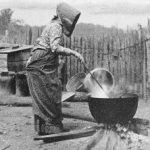 even bear to hear about certain things, because they might be too upsetting to her. In reality, they had vastly underestimated their women.
even bear to hear about certain things, because they might be too upsetting to her. In reality, they had vastly underestimated their women.
When the men got hurt, and the garden needed to be cared for, the women would till the ground…fighting with the tiller behind a horse, and winning the battle. These women took care of the house, the children, the sick or injured husband, and the garden or other crops, all without batting an eye. These women knew all about the hardships of frontier living, and when the going got tough, they didn’t turn and run back east. When the Indians attacked, they stayed and fought with their men. They could not afford to hide in a cellar, their hands were needed to hold a gun. They even faced the Indians alone, when their men were away, becoming excellent negotiators, who were able to make a trade of their wares that, in the end saved their own lives and the lives of their families. They were determined to make this new frontier work, and for the most part, they did it all without making a name for themselves. Sometimes, when we look up ancestors in historic archives, these women are either listed only as Mrs, acknowledging only the husband’s name, or they were listed only as the wife of their husband. Their true identity sometimes remains forever a mystery, and yet, they were heroes…but, they were anonymous heroes. The great men they stood behind, thereby making these men successful, may have been heroes of the frontier, and their name may have been one that every history book told us all about, 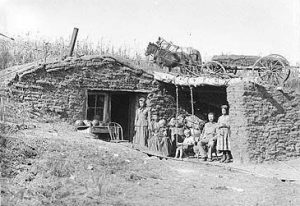 but their wives, who worked quietly beside them, remained unknown. We knew about the exploits of the men, the towns they founded, the travels they made exploring ever westward, but the women who were there with them, cooking the meals while the men talked, cleaning up afterward alone, delivering their babies often with only the help of their husband, carrying a baby, while weeding a garden, and feeding their family before themselves, going hungry, if necessary, to make sure the family was taken care of…these women rarely made the history books. Their job must have seemed to mundane to be considered adventurous, but without their contribution, this nation would not have become the great Republic that it is.
but their wives, who worked quietly beside them, remained unknown. We knew about the exploits of the men, the towns they founded, the travels they made exploring ever westward, but the women who were there with them, cooking the meals while the men talked, cleaning up afterward alone, delivering their babies often with only the help of their husband, carrying a baby, while weeding a garden, and feeding their family before themselves, going hungry, if necessary, to make sure the family was taken care of…these women rarely made the history books. Their job must have seemed to mundane to be considered adventurous, but without their contribution, this nation would not have become the great Republic that it is.
 Tornado warnings and warning sirens are things that just about every person knows about these days, but in 1944, they weren’t available at all. It wasn’t that no one had thought about a tornado warning system, but rather that they had and they decided against it,and so nothing was developed. If you’re like me, you wonder why anyone would think it a bad idea to warn people about the possibility of a tornado, but that was exactly what happened. According to a report titled “The History (and Future) of Tornado Warning Dissemination in the United States” by Timothy A. Coleman, Kevin R. Knupp, James Spann, J. B. Elliott, and Brian E. Peters, “Despite promising research on the conditions that are favorable for tornadoes in the 1880s by John P. Finley, a general consensus was reached among scientists in the 1880s and 1890s that tornado forecasts and warnings would cause more harm than good. A ban was placed on the issuance of tornado warnings from 1887, when the U.S. Army Signal Corps handled weather forecasts, until 1938, when the civilian U.S. Weather Bureau (USWB) finally lifted the ban.” Even after the an was lifted, warnings were pretty primitive. Modern tornado warning really took off and began to develop in 1948…too late for the people of West Virginia and Pennsylvania on June 23, 1944.
Tornado warnings and warning sirens are things that just about every person knows about these days, but in 1944, they weren’t available at all. It wasn’t that no one had thought about a tornado warning system, but rather that they had and they decided against it,and so nothing was developed. If you’re like me, you wonder why anyone would think it a bad idea to warn people about the possibility of a tornado, but that was exactly what happened. According to a report titled “The History (and Future) of Tornado Warning Dissemination in the United States” by Timothy A. Coleman, Kevin R. Knupp, James Spann, J. B. Elliott, and Brian E. Peters, “Despite promising research on the conditions that are favorable for tornadoes in the 1880s by John P. Finley, a general consensus was reached among scientists in the 1880s and 1890s that tornado forecasts and warnings would cause more harm than good. A ban was placed on the issuance of tornado warnings from 1887, when the U.S. Army Signal Corps handled weather forecasts, until 1938, when the civilian U.S. Weather Bureau (USWB) finally lifted the ban.” Even after the an was lifted, warnings were pretty primitive. Modern tornado warning really took off and began to develop in 1948…too late for the people of West Virginia and Pennsylvania on June 23, 1944.
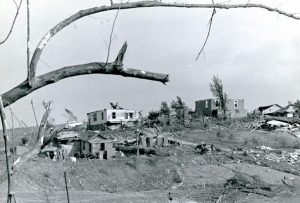
On that June 23rd in 1944, a series of tornadoes across West Virginia and Pennsylvania kill more than 150 people. Most of the twisters were classified as F3, but the most deadly one was an F4 on the Fujita scale, meaning it was a devastating tornado, with winds in excess of 207 miles per hour. The afternoon was very hot, when atmospheric conditions suddenly changed and the tornadoes began to form in Maryland. At about 5:30 pm, an F3 tornado, with winds between 158 and 206 miles per hour, struck in western Pennsylvania. That storm killed two people. Just Forty-five minutes later, a very large twister began in West Virginia, and moved into Pennsylvania. It then tracked back to West Virginia. By the time this F4 tornado ended, it had killed 151 people and leveled hundreds of homes. Another tornado struck that afternoon at a YMCA camp in Washington, Pennsylvania. A letter written by a camper was later found 100 miles away. Area Coal-mining towns were also hit hard on June 23rd. There were some reports that a couple of tornadoes actually crossed the Appalachian mountain range, going up one side and coming down the other…a very rare event with any mountain. Finally, about 10 pm, the remarkable series of twisters finally ended, after the last one hit in Tucker County, West Virginia. In all, the storms caused the  destruction of thousands of structures and millions of dollars in damages, and that was just the monetary losses.
destruction of thousands of structures and millions of dollars in damages, and that was just the monetary losses.
While there isn’t much that can be done to spare property in the path of tornadoes, an early warning, and the appropriate action taken, can save the lives of hundreds of people. Sadly, early warnings were not available to save the 153 people killed in the tornado outbreak of June 23, 1944. They were still in the works, because of all the years wasted when scientists decided it was not in the public’s best interest to know about tornadoes. I’m really thankful that the ban was lifted and we have these necessary warnings these days.
 On June 22, 1962, an Air France Boeing 707 crashed on the island of Guadeloupe, killing all 113 passengers and crew members aboard. It was one of five major accidents involving Boeing 707s during that year. In all, the five crashes that year killed 457 people. Crashes happen, and unfortunately, they are not always such an unusual occurrence. Nevertheless, there was a mystery involved here. The Boeing 707 was originally a KC-135 military tanker and bomber. Boeing later decided to modify it to be used for civilian transport, and the finished product was the Boeing 707. The new design proved very popular in the commercial aviation industry. The Boeing 707 was not a fuel efficient as some of the other planes of that era, but it was faster than any other commercial jet at that time, so it made up for the fuel problem with its greater speed.
On June 22, 1962, an Air France Boeing 707 crashed on the island of Guadeloupe, killing all 113 passengers and crew members aboard. It was one of five major accidents involving Boeing 707s during that year. In all, the five crashes that year killed 457 people. Crashes happen, and unfortunately, they are not always such an unusual occurrence. Nevertheless, there was a mystery involved here. The Boeing 707 was originally a KC-135 military tanker and bomber. Boeing later decided to modify it to be used for civilian transport, and the finished product was the Boeing 707. The new design proved very popular in the commercial aviation industry. The Boeing 707 was not a fuel efficient as some of the other planes of that era, but it was faster than any other commercial jet at that time, so it made up for the fuel problem with its greater speed.
The airport on the island of Guadeloupe is located in a valley that is surrounded by mountains. Guadeloupe is a part of the French West Indies,located in the Caribbean. This particular airport is not the pilots favorite, because it requires them to make a steep descent just prior to landing. Any problem that occurs in the descent, is very hard to correct, because there is just no time. On June 22, the Air France flight failed to descend correctly and crashed directly into a peak call Dos D’Ane, or the Donkey’s Back. The plane exploded in a fireball; there were no survivors. The flight occurred before the black box flight recorder was invented, so no sure reason for the crash was ever officially found.
This crash was the third deadly crash of a Boeing 707 in a month, so something had to be done. On May 22nd, 45 people died when a plane went down in Missouri and on June 3rd, another Air France 707 crashed in Paris killing 130 people. No evidence was ever found that connected the accidents. It is believed that the weather played a part in the June 22, 1962 crash. The weather was poor in Guadeloupe that day. A violent thunderstorm was in the area, with a low cloud ceiling. Adding to the problem, the VOR navigational beacon 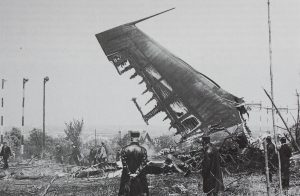 was out of service. The crew reported themselves over the non-directional beacon (NDB) at 5,000 feet and turned east to begin the final approach. That was the last time that anything was “normal” with the flight. Due to incorrect automatic direction finder (ADF) readings caused by the thunderstorm, the plane strayed 9.3 mile west from the procedural let-down track. Moments later, the plane crashed in a forest on the hill called Dos D’Ane, at about 1,400 feet and then exploded. There were no survivors. Among the dead was French Guianan politician and war hero Justin Catayée and poet and black-consciousness activist Paul Niger. While weather played a significant part in the crash, it was not the only cause.
was out of service. The crew reported themselves over the non-directional beacon (NDB) at 5,000 feet and turned east to begin the final approach. That was the last time that anything was “normal” with the flight. Due to incorrect automatic direction finder (ADF) readings caused by the thunderstorm, the plane strayed 9.3 mile west from the procedural let-down track. Moments later, the plane crashed in a forest on the hill called Dos D’Ane, at about 1,400 feet and then exploded. There were no survivors. Among the dead was French Guianan politician and war hero Justin Catayée and poet and black-consciousness activist Paul Niger. While weather played a significant part in the crash, it was not the only cause.
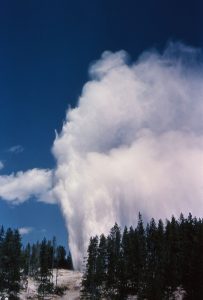 These days, at least in Wyoming, the news is often full of new eruption stories pertaining to Steamboat Geyser in Yellowstone National Park. Steamboat Geyser was dormant from 1911 to 1961. Eleven eruptions were noted between June 4, 1990 and September 23, 2014. Then beginning on March 15, 2018, we have seen a sudden increase in eruptions. Beginning on March 15th, there have been ten eruptions to date…just over three months. That is unheard of for this geyser in recorded history. In reality, it can do what Kilauea has done on Hawaii’s Big Island, only much bigger, because the geyser field in Yellowstone National Park lies on top of an active volcano, with multiple chambers of magma from deep beneath the earth. The same energy that causes geysers to blow could spew an ash cloud as far as Chicago and Los Angeles.
These days, at least in Wyoming, the news is often full of new eruption stories pertaining to Steamboat Geyser in Yellowstone National Park. Steamboat Geyser was dormant from 1911 to 1961. Eleven eruptions were noted between June 4, 1990 and September 23, 2014. Then beginning on March 15, 2018, we have seen a sudden increase in eruptions. Beginning on March 15th, there have been ten eruptions to date…just over three months. That is unheard of for this geyser in recorded history. In reality, it can do what Kilauea has done on Hawaii’s Big Island, only much bigger, because the geyser field in Yellowstone National Park lies on top of an active volcano, with multiple chambers of magma from deep beneath the earth. The same energy that causes geysers to blow could spew an ash cloud as far as Chicago and Los Angeles.
It’s strange to think about the fact that Yellowstone National Park lies on such a huge volcano, and yet three extremely large explosive eruptions have occurred at Yellowstone in the past 2.1 million years with a recurrence  interval of about 600,000 to 800,000 years. More frequent eruptions of basalt and rhyolite lava flows have occurred before and after the large caldera-forming events. It is said that if the Yellowstone volcano erupted again, it it would be catastrophic, but with the chances of a supervolcanic paroxysm being currently around one-in-730,000, it is less likely than a catastrophic asteroid impact. I guess Wyomingites can breathe a little easier. Nevertheless, scientists do want to know what’s behind the most recent activity at Steamboat Geyser. “We see gas emissions. We see all kinds of thermal activity. That’s what Yellowstone does. That’s what it’s supposed to do. It’s one of the most dynamic places on earth,” said Mike Poland, the scientist in charge of the Yellowstone Volcano Observatory.
interval of about 600,000 to 800,000 years. More frequent eruptions of basalt and rhyolite lava flows have occurred before and after the large caldera-forming events. It is said that if the Yellowstone volcano erupted again, it it would be catastrophic, but with the chances of a supervolcanic paroxysm being currently around one-in-730,000, it is less likely than a catastrophic asteroid impact. I guess Wyomingites can breathe a little easier. Nevertheless, scientists do want to know what’s behind the most recent activity at Steamboat Geyser. “We see gas emissions. We see all kinds of thermal activity. That’s what Yellowstone does. That’s what it’s supposed to do. It’s one of the most dynamic places on earth,” said Mike Poland, the scientist in charge of the Yellowstone Volcano Observatory.
Steamboat Geyser is the least predictable geyser in all of Yellowstone National Park. It could erupt in five 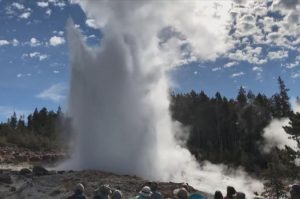 minutes, five years, or even 50 years from now. Yet no one visiting Yellowstone wants to turn away from the sight. “That would be the chance of a lifetime,” one visitor said. “I would be amazed.” Steamboat Geyser,is the world’s tallest and far more powerful than Old Faithful, and right now, it’s roaring back to life. Still, timing is everything, and only a few people get to see it. Poland’s team of volcanologists are using thermal-imaging equipment to track the temperature of the 50-mile-wide magma field. They also monitor 28 seismographs since a super volcano would include major earthquake activity. So far,there is no indication that this is anything other than an unusual series of eruptions, and not indication of increased volcanic activity, which puts many people’s minds at ease. The geyser is welcome to continue erupting, but I say, “Just leave that volcano alone.”
minutes, five years, or even 50 years from now. Yet no one visiting Yellowstone wants to turn away from the sight. “That would be the chance of a lifetime,” one visitor said. “I would be amazed.” Steamboat Geyser,is the world’s tallest and far more powerful than Old Faithful, and right now, it’s roaring back to life. Still, timing is everything, and only a few people get to see it. Poland’s team of volcanologists are using thermal-imaging equipment to track the temperature of the 50-mile-wide magma field. They also monitor 28 seismographs since a super volcano would include major earthquake activity. So far,there is no indication that this is anything other than an unusual series of eruptions, and not indication of increased volcanic activity, which puts many people’s minds at ease. The geyser is welcome to continue erupting, but I say, “Just leave that volcano alone.”
 When we think of deployment, we think of the military and of war, but there are other ways to be deployed too, and some of them do not even include the military. Every year, thousands of firefighters are separated from their family members, some of them for months at a time. For the most part, these are wildland firefighters, but sometimes they even have to enlist the help of teams from cities around the country. Wildland fires are not bound by the schedules of humans. Once they get going, they take on a life of their own. Firefighters are in it for the long haul, and many wildland firefighters go from fire to fire, spending the entire fire season far away from their families.
When we think of deployment, we think of the military and of war, but there are other ways to be deployed too, and some of them do not even include the military. Every year, thousands of firefighters are separated from their family members, some of them for months at a time. For the most part, these are wildland firefighters, but sometimes they even have to enlist the help of teams from cities around the country. Wildland fires are not bound by the schedules of humans. Once they get going, they take on a life of their own. Firefighters are in it for the long haul, and many wildland firefighters go from fire to fire, spending the entire fire season far away from their families.
The other night my husband, Bob and I were watching a television program called FireStorm. The show focused on not just what happens during a wildfire, but also on the people who are affected by the fire, that most of us never think about…the firefighters. These are the people who leave their families at home and head out to fight a fire at a moments notice. Some of these people are gone for as much as nine months out of the year, going from fire to fire. These people include the smoke jumpers, the tanker 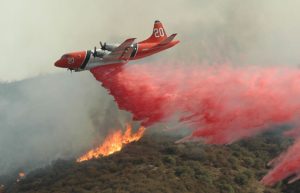 plane personnel, the hotshot units, and sometimes teams from cities in the area, as well as the Bureau of Land Management, and the Forest Service firefighting teams. These people talked about missing everything from school functions to weddings and childbirth. The fires wait for no man, and people depend on these men and women to drop everything and come quickly to try to save their homes.
plane personnel, the hotshot units, and sometimes teams from cities in the area, as well as the Bureau of Land Management, and the Forest Service firefighting teams. These people talked about missing everything from school functions to weddings and childbirth. The fires wait for no man, and people depend on these men and women to drop everything and come quickly to try to save their homes.
Smoke jumpers are especially isolated. They jump into a fire area and they are pretty much on their own for up to 3 weeks. The have to pack supplies, tents, and water with them. Part of it is dropped with the smoke jumpers and part of it with it’s own parachute. These firefighters are on their own now…in the middle of the monster. Obviously, they have ways out, but often it is by helicopter. They have to be alert at all times, and there is no time for fun and games. Smoke jumpers are essentially seal teams, when compared to the military. They go out on missions that no one else wants to attempt, and most often, they come back alive too. That is not always the case of course, because some of these teams have been overtaken and killed like the Prineville,  Oregon hotshot team killed on Storm King Mountain in Colorado, when the fire exploded and ran up the hill overtaking them. They paid the ultimate sacrifice for other people in an effort to save lives and homes.
Oregon hotshot team killed on Storm King Mountain in Colorado, when the fire exploded and ran up the hill overtaking them. They paid the ultimate sacrifice for other people in an effort to save lives and homes.
Firefighters who go out for months at a time fighting wildfires all over the country, are truly just as much deployed as their military counterparts, but we seldom think about the family side of their time fighting the fires. The spouses and children, and even parents and siblings, waiting and praying that their firefighter will make it home. It is a different kind of deployment, but it is a deployment nevertheless.
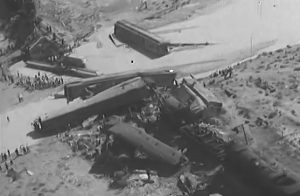 A sudden downpour near Terry, Montana on the evening of June 19, 1938 caused a flash flooding of the Custer Creek that would lead to a disaster before the night was over. Earlier in the day, a track walker was sent out the check the rail lines near Custer Creek which was located near the town of Terry, Montana. After his inspection, he reported to his superiors that the conditions were dry, and there were no problems with the tracks.
A sudden downpour near Terry, Montana on the evening of June 19, 1938 caused a flash flooding of the Custer Creek that would lead to a disaster before the night was over. Earlier in the day, a track walker was sent out the check the rail lines near Custer Creek which was located near the town of Terry, Montana. After his inspection, he reported to his superiors that the conditions were dry, and there were no problems with the tracks.
That was true at the time, but within a few hours, a sudden downpour overwhelmed Custer Creek. A small winding river, Custer Creek runs through 25 miles of the Great Plains before depositing into the Yellowstone River. Small streams like Custer Creek are prone to flash floods, because they don’t have  the capacity to handle any big influx of water, and their banks can quickly and easily be overtaken during heavy rains. As the water came rushing down stream, it washed out a bridge used by the trains. When the Olympian Special came through, it went crashing into the raging waters with no warning. Two sleeper cars were buried in the muddy waters. The night was pitch black seriously hampering rescue efforts. In all, 46 people lost their lives, and 60 others were seriously injured. The rear cars stayed above the water, but scores of passengers were seriously injured. They could not be evacuated until the following morning. I can’t even begin to imagine how awful that was.
the capacity to handle any big influx of water, and their banks can quickly and easily be overtaken during heavy rains. As the water came rushing down stream, it washed out a bridge used by the trains. When the Olympian Special came through, it went crashing into the raging waters with no warning. Two sleeper cars were buried in the muddy waters. The night was pitch black seriously hampering rescue efforts. In all, 46 people lost their lives, and 60 others were seriously injured. The rear cars stayed above the water, but scores of passengers were seriously injured. They could not be evacuated until the following morning. I can’t even begin to imagine how awful that was.
That was a tough week for Montana. Just a few days later, Black Eagle saw “torrents of water” that floated 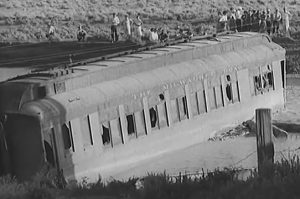 furniture in the house of Sam Tadich, the sheriff had to help a rescue effort, the road to Giant Springs washed away and water was up to cows’ flanks around the Sun River. Havre’s worst flood came in June 22, 1938, when a cloudburst in the Bear Paw Mountains sent out a wall of water. Ten people were killed. Floating train cars were wedged under the viaduct, 10 miles of highway were underwater between Laredo and Box Elder, with a bridge washed out, the Havre Daily News reported. Rain is a good thing, but too much rain, coming too fast can devastate an area, especially one with a creek or river, in a very short time, and for Montana, it was a very rainy week, making it a very tough week.
furniture in the house of Sam Tadich, the sheriff had to help a rescue effort, the road to Giant Springs washed away and water was up to cows’ flanks around the Sun River. Havre’s worst flood came in June 22, 1938, when a cloudburst in the Bear Paw Mountains sent out a wall of water. Ten people were killed. Floating train cars were wedged under the viaduct, 10 miles of highway were underwater between Laredo and Box Elder, with a bridge washed out, the Havre Daily News reported. Rain is a good thing, but too much rain, coming too fast can devastate an area, especially one with a creek or river, in a very short time, and for Montana, it was a very rainy week, making it a very tough week.
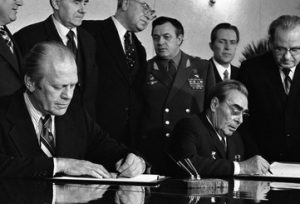 During the Cold War, the threat of a nuclear attack was the biggest concern in world relationships. During the late 1960s, the United States learned that the Soviet Union had embarked upon a massive Intercontinental Ballistic Missile (ICBM) buildup designed to catch up with the United States. The situation seemed to be heating up, because the Soviet Union seemed far more likely to use such weapons, so it looked like it was time to take action. In January 1967, President Lyndon Johnson announced that the Soviet Union had begun to construct a limited Anti-Ballistic Missile (ABM) defense system around Moscow. The development of an ABM system could allow one side to launch a first strike and then prevent the other from retaliating by shooting down incoming missiles. That was completely unacceptable.
During the Cold War, the threat of a nuclear attack was the biggest concern in world relationships. During the late 1960s, the United States learned that the Soviet Union had embarked upon a massive Intercontinental Ballistic Missile (ICBM) buildup designed to catch up with the United States. The situation seemed to be heating up, because the Soviet Union seemed far more likely to use such weapons, so it looked like it was time to take action. In January 1967, President Lyndon Johnson announced that the Soviet Union had begun to construct a limited Anti-Ballistic Missile (ABM) defense system around Moscow. The development of an ABM system could allow one side to launch a first strike and then prevent the other from retaliating by shooting down incoming missiles. That was completely unacceptable.
President Johnson decided to call for strategic arms limitations talks…nicknamed SALT, and in 1967, he and Soviet Premier Alexei Kosygin met at Glassboro State College in New Jersey. Johnson said they must gain “control of the ABM race,” and Secretary of Defense Robert McNamara argued that the more each reacted to the other’s escalation, the more they had chosen “an insane road to follow.” Completely abolishing nuclear weapons would be impossible, but limiting the development of both offensive and defensive strategic systems could be done, and it might help stabilize relations between the 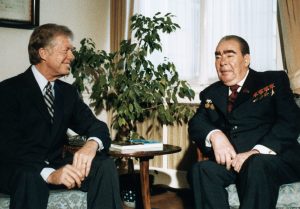 United States and the Soviet Union. The resulting SALT-I treaty was signed in 1972. The 1972 treaty limited a wide variety of nuclear weapons, but it did not address many of the other issues, so shortly after the SALT-I treaty was ratified, talks between the United States and the Soviet Union began anew. Those talks failed to achieve any new breakthroughs. By 1979, both the United States and the Soviet Union were eager to try again. For the United States, the thought that the Soviets were leaping ahead in the arms race was the primary motivator. For the Soviet Union, the increasingly close relationship between America and communist China was a cause for growing concern.
United States and the Soviet Union. The resulting SALT-I treaty was signed in 1972. The 1972 treaty limited a wide variety of nuclear weapons, but it did not address many of the other issues, so shortly after the SALT-I treaty was ratified, talks between the United States and the Soviet Union began anew. Those talks failed to achieve any new breakthroughs. By 1979, both the United States and the Soviet Union were eager to try again. For the United States, the thought that the Soviets were leaping ahead in the arms race was the primary motivator. For the Soviet Union, the increasingly close relationship between America and communist China was a cause for growing concern.
The SALT-II agreement was the result of those many nagging issues that were left over from the successful SALT-I treaty of 1972, but it had problems of its own. The treaty basically established numerical equality between the two nations in terms of nuclear weapons delivery systems. It also limited the number of MIRV missiles (missiles with multiple, independent nuclear warheads). In truth, the treaty did little or nothing to stop, or even substantially slow down, the arms race, and it met with unrelenting criticism in the United States. The treaty was thought to be a “sellout” to the Soviets. People believed that it would leave America virtually defenseless against a whole range of new weapons not mentioned in the agreement. Even supporters of arms control were less than enthusiastic about the treaty, since it did little to actually control arms. Nevertheless, during a summit meeting in Vienna, President Jimmy Carter and Soviet leader Leonid Brezhnev signed the  SALT-II agreement dealing with limitations and guidelines for nuclear weapons, on June 18, 1979. The treaty, would never formally go into effect, and it proved to be one of the most controversial agreements between the United States and the Soviet Union of the entire Cold War. Debate over SALT-II in the U.S. Congress continued for months. Then in December 1979, the Soviets invaded Afghanistan. The Soviet attack effectively killed any chance of SALT-II being passed, and Carter ensured this by withdrawing the treaty from the Senate in January 1980. SALT-II thus remained signed, but was never ratified. During the 1980s, both nations agreed to respect the agreement until such time as new arms negotiations could take place.
SALT-II agreement dealing with limitations and guidelines for nuclear weapons, on June 18, 1979. The treaty, would never formally go into effect, and it proved to be one of the most controversial agreements between the United States and the Soviet Union of the entire Cold War. Debate over SALT-II in the U.S. Congress continued for months. Then in December 1979, the Soviets invaded Afghanistan. The Soviet attack effectively killed any chance of SALT-II being passed, and Carter ensured this by withdrawing the treaty from the Senate in January 1980. SALT-II thus remained signed, but was never ratified. During the 1980s, both nations agreed to respect the agreement until such time as new arms negotiations could take place.

 Yesterday, in between bouts of sprinkling rain, my grand-niece, Siara Harman became Siara Olsen, when she said “I do” to the love of her life, Nick Olsen. The wedding was held at City Park in Casper, Wyoming, under mostly cloudy skies, with sprinkling rain before it and heavier rain after. Nevertheless, the actual wedding took place under sunny skies, and the ceremony was the beautiful Cinderella wedding that Siara had always wanted. Siara wore a stunning light pink fitted dress, with a lovely full skirt from the knees down, that swept into a train that glided along behind her. She was given in marriage by her step-dad, Dave Balcerzak, who she considers her dad. It was a precious moment for them. Her bride’s maids wore beautiful gold sequined dresses, and the groomsmen wore white tuxedos with pale gold vest and tie. The effect was classic Cinderella, and Siara was a beautiful princess. The wedding was put together by Siara’s mom, Chantel Balcerzak, who runs a
Yesterday, in between bouts of sprinkling rain, my grand-niece, Siara Harman became Siara Olsen, when she said “I do” to the love of her life, Nick Olsen. The wedding was held at City Park in Casper, Wyoming, under mostly cloudy skies, with sprinkling rain before it and heavier rain after. Nevertheless, the actual wedding took place under sunny skies, and the ceremony was the beautiful Cinderella wedding that Siara had always wanted. Siara wore a stunning light pink fitted dress, with a lovely full skirt from the knees down, that swept into a train that glided along behind her. She was given in marriage by her step-dad, Dave Balcerzak, who she considers her dad. It was a precious moment for them. Her bride’s maids wore beautiful gold sequined dresses, and the groomsmen wore white tuxedos with pale gold vest and tie. The effect was classic Cinderella, and Siara was a beautiful princess. The wedding was put together by Siara’s mom, Chantel Balcerzak, who runs a  wedding planner business. Chantel did an amazing job with the wedding, and everything went off without a hitch, It couldn’t have been more beautiful.
wedding planner business. Chantel did an amazing job with the wedding, and everything went off without a hitch, It couldn’t have been more beautiful.
When Siara met Nick, she knew almost immediately that he was the one. They dated for a while, but they both knew that this was a forever kind of love. They both knew that they would be married…and yesterday was that special day. Yesterday, their friends and family gathered together to witness the beautiful exchange of vows for this beautiful couple. The gathering of their friends and family made this perfect day complete. We are all so happy for Siara and Nick. I know that the future is going to be very bright for them. They have a great relationship, and they are very much in love with each other. I’m sure there will be children in the future, and 
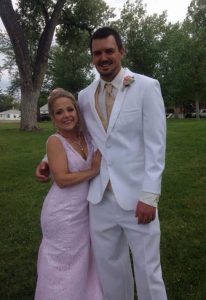 we will be very excited for that time, but that is another story for another time.
we will be very excited for that time, but that is another story for another time.
After a beautiful reception, complete with an amazing wedding cake, and a groom’s cake shaped like a taco, in honor of Siara and Nick’s love of Taco Bell, the couple danced the night away with their family friends, and of course with each other. I’m sure that like most couples, they didn’t want the night to end. The festivities continued until about 11:00pm, and them the couple went to their hotel room, where they had the honeymoon suite. So,today marks their first full day of their lives as husband and wife, and we couldn’t possibly be happier. Congratulations on your wedding and on your future together Siara and Nick!! We love you, and pray God’s greatest blessings over you both.
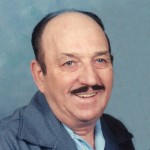
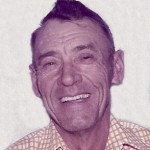 For people who don’t have a dad on Earth, Father’s Day always arrives with a hint of sadness. Most of us would love to have just one more day, just one more moment to spend with our dad again, but that can’t be, so we quietly wish him a happy Father’s Day in Heaven, knowing that he is ok…even more,that he is happy. It is us, his kids who feel the sadness. For me, both my dad, Allen Spencer and my father-in-law, Walt Schulenberg are in Heaven now. I often find myself almost forgetting that Father’s Day is coming, maybe my mind is just trying to blur the ensuing sadness that always follows the realization that they are gone. My only consolation is the knowledge that I will be seeing them again when I get to Heaven. For now, to my dads, I say Happy Father’s Day in Heaven. I know it will be an amazing day!!
For people who don’t have a dad on Earth, Father’s Day always arrives with a hint of sadness. Most of us would love to have just one more day, just one more moment to spend with our dad again, but that can’t be, so we quietly wish him a happy Father’s Day in Heaven, knowing that he is ok…even more,that he is happy. It is us, his kids who feel the sadness. For me, both my dad, Allen Spencer and my father-in-law, Walt Schulenberg are in Heaven now. I often find myself almost forgetting that Father’s Day is coming, maybe my mind is just trying to blur the ensuing sadness that always follows the realization that they are gone. My only consolation is the knowledge that I will be seeing them again when I get to Heaven. For now, to my dads, I say Happy Father’s Day in Heaven. I know it will be an amazing day!!
My husband, Bob Schulenberg comes to mind next. This is the man with whom I share my life. The man who gave me my family, two beautiful daughters, Corrie and Amy.I couldn’t be more blessed. Bob took our marriage vows very seriously. When he said them, he meant that he would stand by me through everything life would throw at us. He has been my best friend, my partner, the love of my life. He has also been there to take care of life’s little problems. He’s my mechanic, my handyman, the strong man whenever I need one. I am so thankful to have been able to travel life’s journey with him. We have so many things in common, that we can 
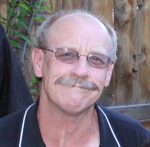 finish each other’s sentences, or just know instinctively what the other is thinking. We are soulmates, and I love him more with each passing day. Bob, I wish you a wonderful Father’s Day. I love you more than you could possible know.
finish each other’s sentences, or just know instinctively what the other is thinking. We are soulmates, and I love him more with each passing day. Bob, I wish you a wonderful Father’s Day. I love you more than you could possible know.
My life has been blessed with two wonderful sons-in-law, Kevin Petersen and Travis Royce, who have, along with my daughters, Corrie Petersen and Amy Royce, have given me four amazing grandchildren, Chris Petersen, Shai Royce, Caalab Royce, and Josh Petersen. As my family has grown, and grown up, the blessings have just kept on growing. My sons-in-law, have truly become my sons, the sons I never had. They both have different personalities, and each one is perfect in their own way. I can’t imagine either of them being like the other, because that would be all wrong. They each have an amazing sense of humor, each in their own way. They both have different talents, and each is great at what they do. The one thing they have in common is that they are both great dads. They would do anything for their kids. They have raised them all to be amazing people, of whom I am very proud. To my sons-in-law, I say Happy Father’s Day…and thank you for being you!!
This Father’s Day is particularly different, because for the first time, I have a grandson, Chris Petersen, who is a dad now. His little daughter arrived a little over two weeks ago, just in time to celebrate Father’s Day. It is so 
 precious to see. Being a dad has completely changed Chris. He has a new sense of contentment. He is complete. Oh I know that there will be more children for him, but that will never be able to change his status as Daddy. That change belongs to her alone, because it was her entrance into the world that made him a Daddy. Chris, along with his fiance, Karen, has a family. He is a Daddy, and this is his first Father’s Day. Happy Father’s Day Chris!! I hope your day is amazing.And to all the dads out there, Happy Father’s Day!! You are all loved!!
precious to see. Being a dad has completely changed Chris. He has a new sense of contentment. He is complete. Oh I know that there will be more children for him, but that will never be able to change his status as Daddy. That change belongs to her alone, because it was her entrance into the world that made him a Daddy. Chris, along with his fiance, Karen, has a family. He is a Daddy, and this is his first Father’s Day. Happy Father’s Day Chris!! I hope your day is amazing.And to all the dads out there, Happy Father’s Day!! You are all loved!!

 My grandnephew, James Renville is one of the nicest, kindest, most thoughtful young men that people could ever know. This is information that comes to me from the people who know him the best, and not just one of them, but rather all of them. James is a family man who dearly loves his family. For James, family comes first, and he always puts them first, even if he has to change his own plans. He is soft spoken, and thinks before he speaks, making sure that his words do not hurt others. James always thinks the best of people, even if others don’t necessarily see good in them. James looks in their heart.
My grandnephew, James Renville is one of the nicest, kindest, most thoughtful young men that people could ever know. This is information that comes to me from the people who know him the best, and not just one of them, but rather all of them. James is a family man who dearly loves his family. For James, family comes first, and he always puts them first, even if he has to change his own plans. He is soft spoken, and thinks before he speaks, making sure that his words do not hurt others. James always thinks the best of people, even if others don’t necessarily see good in them. James looks in their heart.
As a little boy, James was very into the Ninja Turtles, and he went through a Mortal Kombat phase. For several Christmases, all he wanted for Christmas was the costumes for Mortal Kombat and Ninja Turtles. Thankfully, my sister, Cheryl Masterson, who is James’ grandmother, had the talent to make those costumes, and James was delighted in them and played with them constantly…over any other toys he had, in fact. James, Aunt Jenny Spethman was the only person to babysit him, other that his grandma, of course. James would always talk life with Jenny’s boys, and always on their level. He is always playing along with Jenny’s daughter, Aleesia such as pretending that her little vile of water is actually flower potion that he is going to pour on her brothers.
James has a great sense of humor, and loves to pull pranks on his dad, Jim Renville, and his step-dad, Dave Chase. With Dave, James might wake him from a dead sleep while he records the reaction or kicking the soccer ball into the water on the beach so that they have to go get it or saying something stupid while Dave is doing talk to text and then reaching over and hitting send before Dave has time to erase it. Hahaha!! Those guys really have to be on their toes when James is around. While James’ mom, my niece, Toni Chase doesn’t get to see the pranks he pulls on his dad, I’m quite certain that they are just as good. James is quite well known for his pranks, his sense of humor, and the fact that it’s all done in good clean fun, and never in a malicious way. You don’t expect the “victims” of a prank to enjoy the experience, but James’ “victims” actually do. The truth is that he likes to make others laugh (especially himself) at the expense of those he is pranking. He claims that he’s nothing like his dad but he really, he is a lot like his dad. Kids can rarely see that, at least until hey get older. He likes to make the ones he loves smile or do things to make them happy…Dave included. And of course, no pranking story would be complete without mentioning the fact that he is always trying to steal hugs from his Aunt Liz Masterson, because she pretends she doesn’t want them.
James is a self-disciplined man. He eats right and watches his spending. He loves to travel, especially in 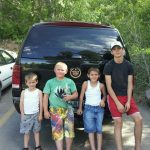
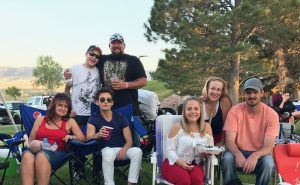 Europe, and he is saving his money from his job in the parks department for the City of Casper. His plan is to take another European vacation hopefully next year after college is out for the summer, or after he finishes college. It is my guess that James will make a number of trips there in the future. James has big plans for his future, and I know that he will be very successful. Today is James’ 21st birthday. Happy birthday James!! Have a great day!! We love you!!
Europe, and he is saving his money from his job in the parks department for the City of Casper. His plan is to take another European vacation hopefully next year after college is out for the summer, or after he finishes college. It is my guess that James will make a number of trips there in the future. James has big plans for his future, and I know that he will be very successful. Today is James’ 21st birthday. Happy birthday James!! Have a great day!! We love you!!

